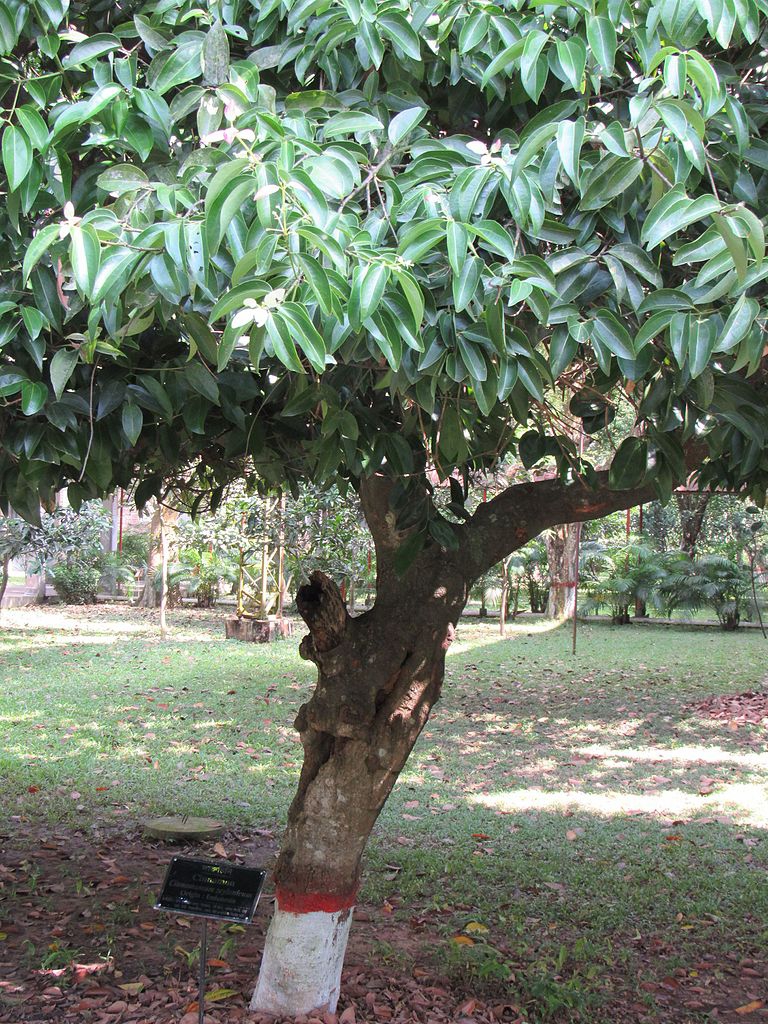
Scientific Name: Cinnamomum verum belonging to the Lauraeceae family
Origin: Sri Lanka, India, Myanmar
Description: Cinnamon is a spice that is produced using the inner bark of the cinnamon tree. The cinnamon trees are small tropical evergreen trees with oval, thick and glossy leaves that turn from red to green with age. The outer bark is gray and white and becomes scaly with age. The flowers are borne in clusters and are green and yellow. The fruit is a small dark drupe (Agustyn, 2024).
Historical Medicinal Use: Madame de Fouquet recommended it be used among other ingredients including safran, pepper, ginger and cloves, as a remedy to make women’ s menstrual cycle start. Cinnamon could also be mixed with almond oil, white wine, syrup of the capillary plant and Alkermes potion to help facilitate birthing for women. It was used to treat a wide range of digestive and respiratory problems.
Modern Medicinal Use: Today, many use cinnamon for flavoring. It also has antioxidant, antibiotic and anti-inflammatory properties however more studies need to be done to prove it works in people. It also contains minerals such as potassium, magnesium and calcium (Griffin, 2023).
Augustyn, Adam, et al. “Cinnamon.” Encyclopædia Britannica, Encyclopædia Britannica, inc., 27 Feb. 2024, www.britannica.com/plant/cinnamon#:~:text=Cinnamon%20is%20native%20to%20Sri%20Lanka%20(formerly%20Ceylon)%2C%20the,and%20a%20warm%20sweet%20flavour.
“Fascinating History of Cinnamon – from Ancient Spice to Modern Delight.” Zoff Foods, zofffoods.com/blogs/masala/history-of-cinnamon#:~:text=The%20story%20of%20cinnamon’s%20history,aromatic%20addition%20to%20their%20cuisine.
Griffin , Morgan. “Cinnamon: Health Benefits and Side Effects.” Edited by Zilpah Sheikh , WebMD, WebMD, 27 Sept. 2023, www.webmd.com/diet/supplement-guide-cinnamon#:~:text=6%20min%20read-,What%20Is%20Cinnamon%3F,is%20added%20to%20many%20foods.
De Fouquet, Marie. Recueil des remèdes faciles et domestiques, choisis et expérimentés, et très approuvés pour toutes sortes de maladies internes et externes, et difficiles à guerir. 1685.